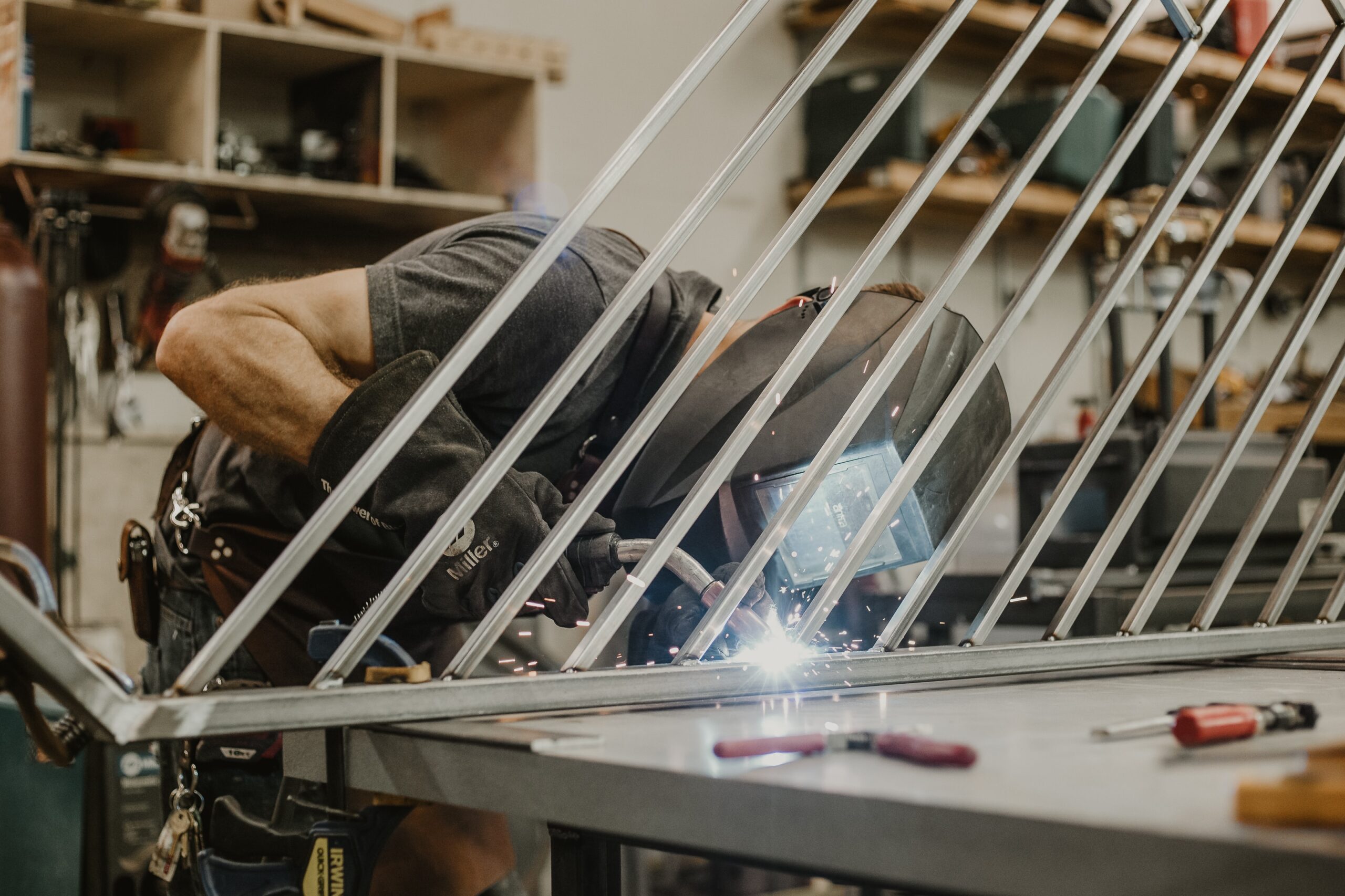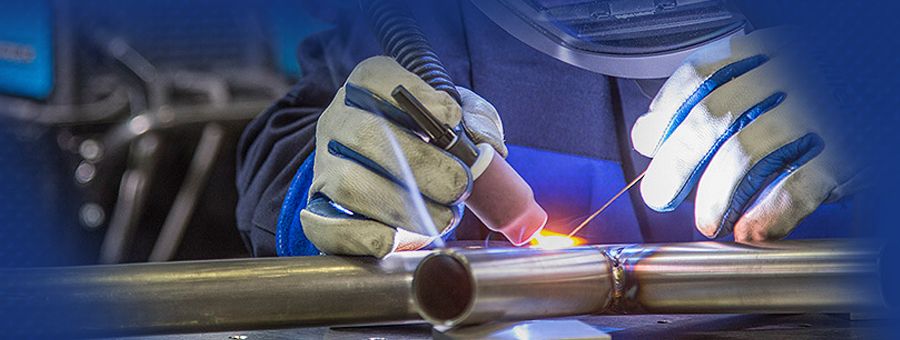Simple weld inspection practices shared by Montana Mobile Welding and Repair
Wiki Article
All About Welding: Key Insights Into Techniques and Ideal Practices for Success
Welding encompasses a range of methods, each fit for details materials and applications. Comprehending these approaches, such as GMAW, SMAW, and TIG, is crucial for achieving ideal results. Furthermore, the best devices and safety and security practices can not be neglected. As prep work and repairing play essential duties in the welding process, understanding these components can substantially boost the top quality of the end product. What are the vital elements that guarantee an effective weld?Understanding Different Welding Techniques
Welding methods include a selection of approaches, each matched to details applications and products. Amongst one of the most usual techniques are Gas Metal Arc Welding (GMAW), Protected Metal Arc Welding (SMAW), and Tungsten Inert Gas Welding (TIG) GMAW, likewise referred to as MIG welding, is popular for its rate and flexibility, making it perfect for slim products. SMAW, or stick welding, is preferred for its simplicity and efficiency in outdoor atmospheres, especially with thicker steels. TIG welding supplies accuracy and control, making it appropriate for intricate work and non-ferrous metals (Belgrade Fabrication). Each strategy has its special advantages and considerations, allowing welders to pick the ideal technique based on the task's needs, material kind, and wanted outcomes. Understanding these techniques is crucial for successful weldingImportant Welding Equipment and Devices
While different welding techniques call for certain abilities, the right tools and tools are equally necessary for achieving top quality results. Essential welding tools includes welding devices, which vary depending on the method-- such as MIG, TIG, or stick welding. Safety equipment, including aprons, helmets, and gloves, guarantees safety and comfort throughout the procedure. Additionally, clamps and fixtures aid protect materials in position, making sure precision in welds. Consumables like welding poles, wire, and protecting gas are additionally vital components that affect the high quality of the weld. In addition, devices such as mills and cutters promote surface preparation and post-weld completing, contributing to a professional outcome. Spending in top notch tools inevitably enhances the efficiency and efficiency of welding tasks.Safety And Security Practices in Welding
Proper safety and security methods are vital in the welding market to safeguard employees from prospective risks. Welders should use appropriate personal protective equipment (PPE), consisting of headgears with proper shading, handwear covers, and flame-resistant apparel. Adequate ventilation is vital to minimize exposure to unsafe fumes and gases created during the welding process. In addition, workers should be learnt the correct handling of welding equipment to prevent mishaps. Fire precaution, such as maintaining combustible products away from the welding location and having fire extinguishers conveniently available, are required. Regular inspections of devices and workspaces can help identify potential risks before they lead to accidents. By adhering to these safety and security techniques, welders can develop a safer working environment and lessen dangers connected with their trade.Preparing Products for Welding
Preparing materials for welding is a vital action that considerably affects the quality and honesty of the last product (Montana Mobile Welding and Repair Belgrade Welding). Correct preparation includes cleaning the surface areas to get rid of contaminants such as rust, oil, and dirt, which can compromise the weld. Methods such as grinding, sanding, or using solvents are generally used to achieve a clean surface area. In addition, guaranteeing that the materials mesh well is crucial; gaps can result in weak welds. It's likewise vital to take into consideration the alignment and positioning of the elements, as this will influence the simplicity of welding and the last result. Ultimately, choosing the proper filler product and ensuring compatibility with the base metals is crucial for attaining solid, durable weldsTips for Achieving High-Quality Welds
Attaining top notch welds calls for interest to information and adherence to finest methods throughout the welding procedure. Appropriate joint prep work is important, guaranteeing surfaces are totally free and tidy from pollutants. Selecting the appropriate filler material and welding method based upon the base metals is essential for excellent bonding. Preserving consistent traveling speed and angle while welding can promote and prevent issues uniformity. Additionally, regulating heat input is crucial; excessive heat can bring about bending and deteriorated joints. Consistently examining the welds during the procedure enables immediate modifications if essential. Finally, employing suitable post-weld therapies, such as cleaning and stress alleviation, can enhance the resilience and honesty of the weld, ultimately making certain a successful result.Repairing Common Welding Issues
Welding typically offers obstacles that can impact the top quality and integrity of the end product. Typical problems such as porosity, irregular weld beads, and getting too hot can emerge, each requiring particular repairing methods. Comprehending these issues is essential for welders to boost their abilities and accomplish optimal outcomes.Porosity Problems Explained
Porosity can often be overlooked, it remains an important concern in welding that can jeopardize the integrity of a finished item. Porosity describes the existence of small gas pockets within the weld bead, which can damage the joint and lead to early failing. This issue commonly arises from pollutants, moisture, or incorrect shielding gas coverage during the welding procedure. To alleviate porosity, welders should confirm that the base products are dry and clean, use ideal protecting gases, and preserve regular welding criteria. Consistently examining the tools and atmosphere can likewise help identify potential problems prior to they materialize in the weld. Dealing with porosity efficiently is crucial for achieving solid, durable welds that meet quality criteria.
Inconsistent Weld Beans
Irregular weld beads can considerably influence the top quality and toughness of a completed product. Different aspects add to this issue, consisting of improper traveling speed, incorrect amperage setups, and irregular electrode angles. When the welder moves as well quickly, a bead might appear narrow and do not have penetration, while moving too gradually can create too much build-up. In addition, making use check here of the incorrect amperage can lead to either undercutting or extreme spatter, both of which compromise weld integrity. The welder's technique, such as inconsistent lantern motion, can additionally cause uneven bead look. To minimize these troubles, welders must concentrate on keeping consistent, controlled activities and making sure correct tools setups to achieve uniformity in their welds. Consistency is vital to attaining solid and reliable welds.Overheating and Warping Issues
Extreme heat throughout the welding process can cause substantial getting too hot and deforming concerns, influencing the structural honesty of the work surface. These problems usually show up as distortion, which can jeopardize alignment and fit-up, making more assembly testing. Variables adding to overheating include the choice of welding parameters, such as voltage and take a trip speed, in addition to the kind of product being welded. To alleviate these concerns, welders need to maintain constant traveling speed and proper warm input while keeping track of the workpiece temperature. Additionally, preheating or post-weld heat therapy can assist alleviate anxieties created by quick air conditioning - Welding. Routine inspection and adherence to finest practices are crucial in protecting against overheating and guaranteeing the longevity and dependability of bonded frameworksRegularly Asked Concerns
What Are the Profession Opportunities in the Welding Industry?
The welding industry supplies varied career opportunities, including placements as welders, engineers, assessors, and teachers. Professionals can operate in production, construction, aerospace, and automotive markets, taking advantage of solid demand and competitive incomes in different functions.Exactly How Can I Improve My Welding Rate Without Compromising Quality?
To enhance welding rate without compromising quality, one ought to exercise reliable strategies, maintain devices, optimize settings, and improve hand-eye control. Regular training and seeking feedback can additionally substantially add to achieving much faster, top notch welds.What Certifications Are Offered for Welders?
Countless certifications exist for welders, including those from the American Welding Culture (AWS), the National Center for Building And Construction Education and Research (NCCER), and various industry-specific companies. These qualifications enhance employability and demonstrate skill proficiency.Just How Does Welding Impact the Features of Metals?
Welding influences the residential or commercial properties of steels by altering their microstructure, which can bring about modifications in strength, ductility, and solidity. Warmth input and cooling rates during the procedure significantly influence these material qualities.Can I Bonded Dissimilar Metals With Each Other?

Report this wiki page